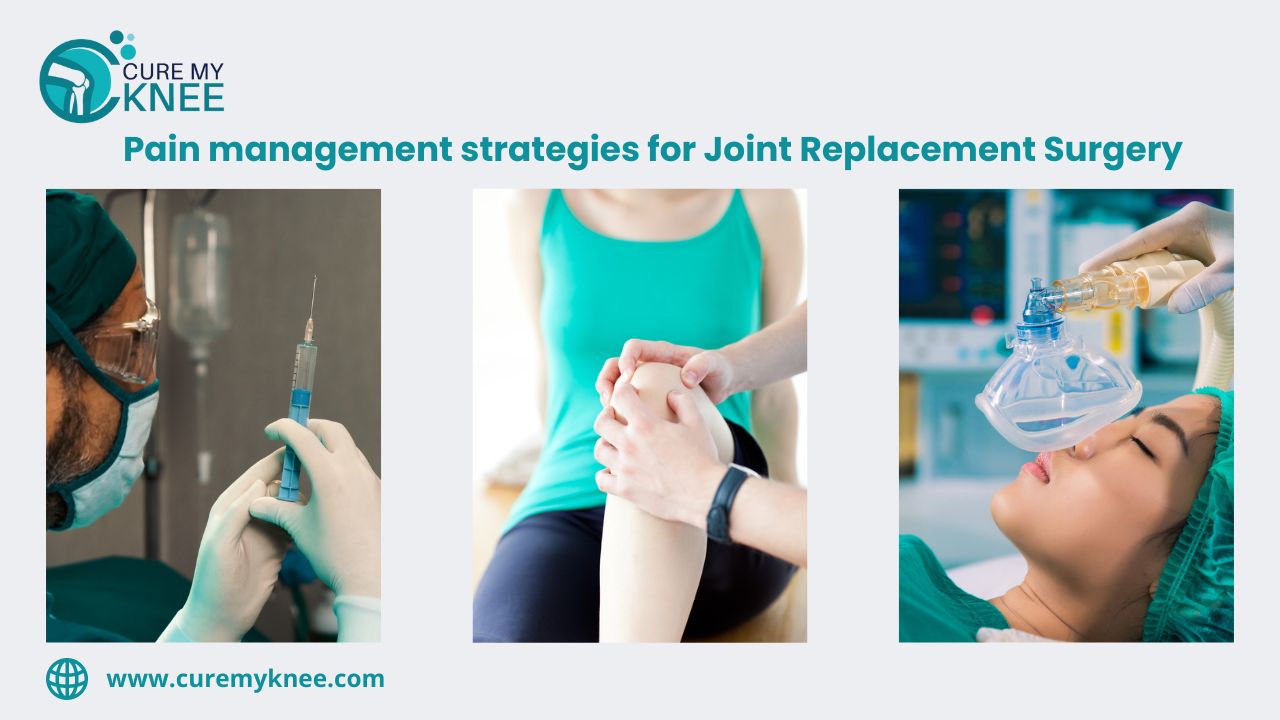
Pain management strategies for joint replacement surgery
Joint replacement is a surgical procedure that seeks to reduce pain, increase mobility, and improve the quality of life for patients who suffer from joint-related disorders. Significant pain, discomfort, and swelling can often after surgery, it can be difficult to deal with this pain. Effective pain management strategies are therefore vital to making sure of positive results from joint replacement surgery.
In this article, we will discuss some of the most effective pain management strategies for joint replacement surgery, It is also essential for before applying any Pain management strategies you should consult your Orthopedic surgeon. Here are the 7 most effective pain management strategies for joint replacement surgery:
Pre-operative education and preparation
Pre-operative instruction and preparation play a vital part in pain management from joint replacement surgery. it is important for Patients should be educated about what to expect before, during, and after surgery. Information about pain management choices, including prescription drugs, physical therapy, and alternative therapies like acupuncture, is also provided
Pre-operative treatments also include a variety of measures to improve patient health and reduce the risk of complications. This may include managing pre-existing medical disorders, improving nutrition, and quitting smoking.
Regional anesthesia
Regional anesthesia includes injecting an anesthetic agent around the nerves that supply the joint, thereby numbing the area and reducing pain. This kind of anesthesia can be used both during and surgery or as part of treated pain management.
Regional anesthesia has many advantages over general anesthesia, involving reduced risk of complications, quick recovery, and less pain and discomfort. The most common form of regional anesthesia used for joint replacement surgery for relief the pain and discomfort, involve epidural, spinal, and peripheral nerve blocks.
Non-opioid pain medications
Non-opioid pain medications are usually used in joint replacement surgery to reduce the risk of opioid-related complications such as addiction, respiratory depression, and nausea. Non-opioid pain medications may include nonsteroidal anti-inflammatory drugs (NSAIDs), and acetaminophen
NSAIDs effectively reducing pain and inflammation but they can also have side effects such as stomach ulcers and bleeding. Acetaminophen is effective in reducing pain but has a limited effect on inflammation. Gabapentinoids can reduce neuropathic pain but can also make you feel tired and sleepy.
Opioid pain medications
Opioid pain medications are effective and helpful in treating pain after joint replacement surgery, but they also have significant risks, such as addiction, respiratory depression, and nausea. Opioids may should be used cautiously and only when required, and may patients should be constantly monitored for any indications of opioid-related complications.
Short-acting opioids such as morphine and hydromorphone may be used for treat pain management, while long-acting opioids such as oxycodone may be used to treat acute pain.
Patient-controlled analgesia (PCA)
Patient-controlled analgesia (PCA) is a beneficial form of pain alleviation that can be supporting the patients to self-administer a predetermined dose of pain medication via a computerized pump. PCA can be used in conjunction with opioids or other pain medications and allows patients to deal with their pain levels while reducing the risk of overdosing.
PCA is useful in the hospital or at home and is effective in reducing pain and enhancing patient satisfaction after joint replacement surgery.
Physical therapy
After, joint replacement surgery, Physical therapy is an important part of the postoperative pain management process. Physical therapy helps reduce pain and discomfort,swelling and inflammation and enhances mobility, strength, and flexibility.
After, joint replacement, many exercises include strengthening the muscles around the joint, range-of-motion exercises and gait training. Physical therapy should start by the patient as soon as possible after joint replacement such as hip replacement, knee replacement, shoulder replacement etc, surgery and continued for a number of weeks or months, depending on the patient’s specific requirements.
Complementary and alternative therapies
After Joint Replacement, Complementary and alternative therapies such as acupuncture, massage therapy, and chiropractic care can also be beneficial in managing pain. These therapies may help reduce pain and discomfort, inflammation, improve circulation, and encourage relaxation.
Conclusion
joint replacement is a surgical procedure that can relieve for individuals suffering from joint pain and mobility issues. Pain management strategies play a vital and critical role in ensuring a successful surgical outcome and a smooth recovery process. Some of the pain management strategies that are commonly used for joint replacement surgery include Pre-operative education and preparation, Regional anesthesia, Non-opioid pain medications, Opioid pain medications, Patient-controlled analgesia (PCA), Physical therapy, Complementary and alternative therapies, These strategies can help to you reduce pain and discomfort, improve patient satisfaction, and support a healing process. It is essential to work closely with your healthcare provider to develop a pain management plan that is tailored to your individual needs and preferences. With the right pain management strategies in place, individuals undergoing joint replacement surgery can have a successful outcome and achieve a better quality of life.
You can also book a free appointment 24*7 at Cure My Knee to consult with an orthopedic doctor in Delhi. The doctor will analyze your previous reports, suggest some diagnostic tests and provides you with suitable solutions afterward. They can treat any problem related to bones and joints in any part of the body. Cure My Knee helps several thousands of patients experience a smooth transition from diagnosis to treatment Procedure and post-surgery rehabilitation to the discharge process.






